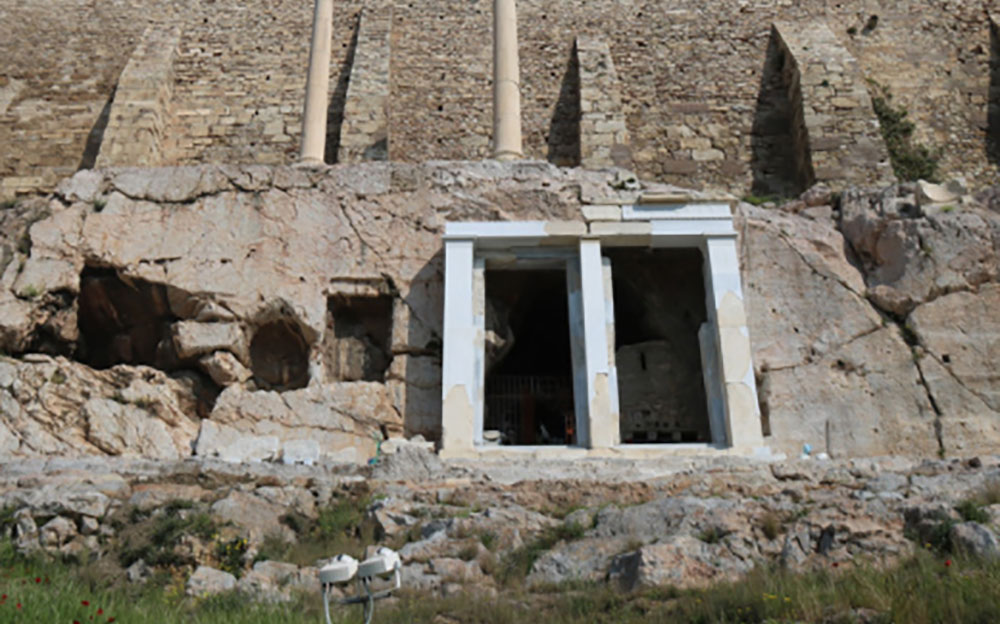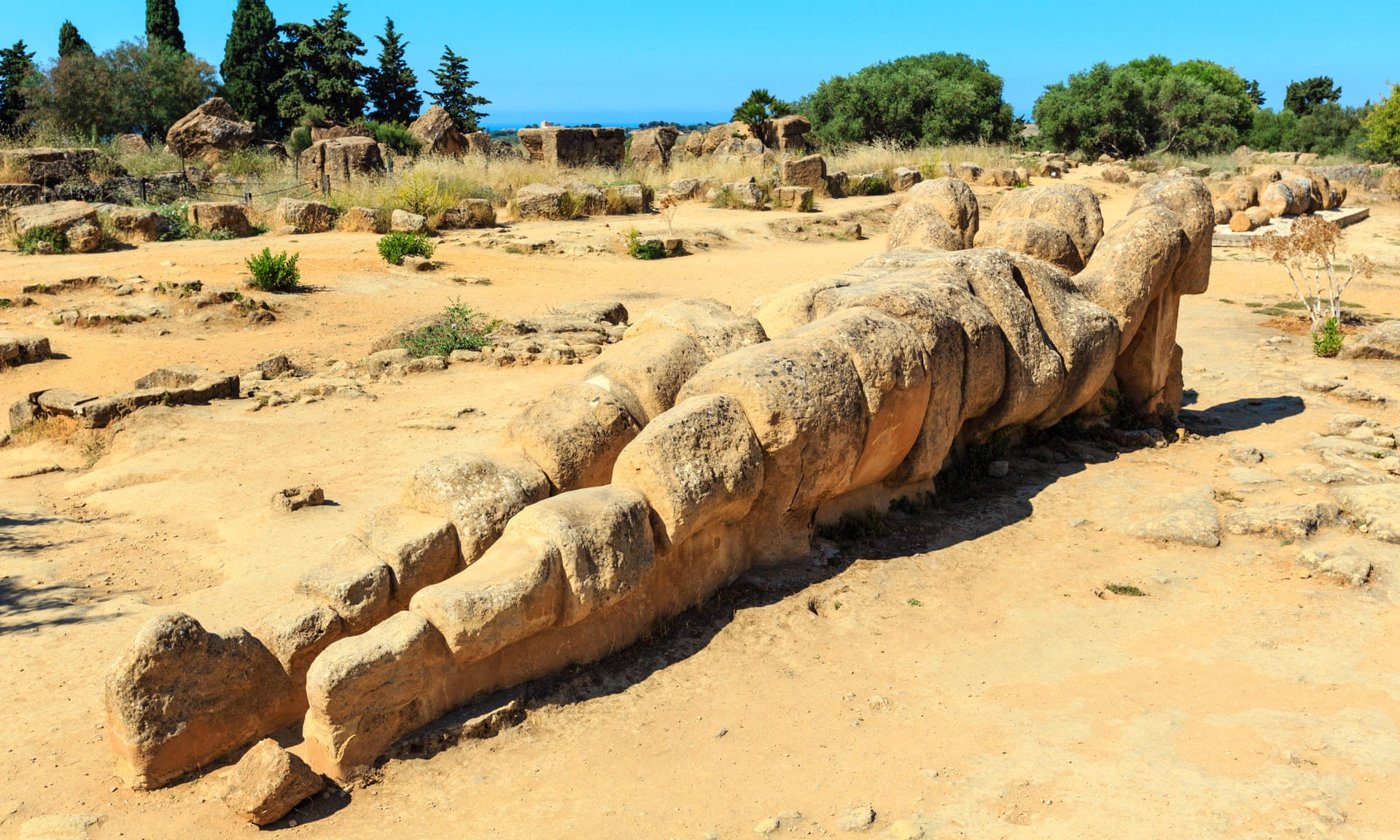Culture Minister Lina Mendoni on Thursday visited the archaeological site at the Epidaurus Asclepeion to be briefed on the progress of recent archaeological excavations which have revealed the remains of an even older temple building found at the shrine, in the vicinity of the Tholos.
The partially-excavated building, which is dated to about 600 B.C., consists of a ground floor with a primitive colonnade and an underground basement chipped out of the rock beneath. The stone walls of the basement are covered in a deep-red-colored plaster and the floor is an intact pebble mosaic, which is one of the best-preserved examples of this rare type of flooring to survive from this era.
The find is considered significant because it predates the impressive Tholos building in the same location, whose own basement served as the chthonic residence of Asclepius, and which replaced the newly-discovered structure after the 4th century B.C.
This shows that the worship of Asclepius at Epidaurus began much earlier than previously thought and had the same chthonic features, while altering what is known about the history of the region in general.
University of Athens Professor Vassilis Lamprinoudakis, head of the excavations in ancient Epidaurus, explained to the Athens-Macedonian News Agency when the building was first uncovered in January.
“This means the worship of Asclepius appears to have begun earlier in the Asclepieion of Epidaurus. Until now, it was believed to have begun around 550 BC, i.e., in the middle of the sixth century BC. Now it is evident that the structures are earlier, and this is particularly important for the history of the sanctuary and for the history of Asclepius himself. At the place where the Tholos was later built, a part of a building, a ‘double’ building, with basement and ground floor has been found. Since there is a basement, like in the Tholos, we consider it to be a forerunner of this ‘mysterious’ building called the Tholos. When it was decided to build the Tholos, this building was demolished. The empty space created by its basement was filled with relics from the old building, but also from other parts of the sanctuary. That is because (when) the great program of the 4th century BC began, some other buildings were also demolished, the material of which was buried with respect in the place.”
The archaeologist explained that the name Tholos “was only given to the structure by the ancient traveler Pausanias in the second century AD. Its original name, as we know from the inscriptions of the 4th century BC, was ‘Thymeli.’ Thymeli was a kind of altar (used in sacrifice), in which offerings were made without blood.”
Lamprinoudakis continued, saying “Research tells us that the Tholos was a kind of underground house of Asclepius, where patients were treated by injection.” The patient who slept in this special place would dream of the god Asclepius to reveal to him the cure for his illness. “This former building had a function similar to that of the Tholos, that is, its basement served as the seat of Asclepius on earth,” the archaeologist explained.
Mendoni encouraged the archaeologists on the site in the completion of their very important work of revealing the structure in its entirety.
The Culture Minister was also briefed on projects designed to showcase the archaeological site and the surrounding park using European Community funding, including the planting of a medicinal herb garden to illustrate how the sanctuary would have functioned.








